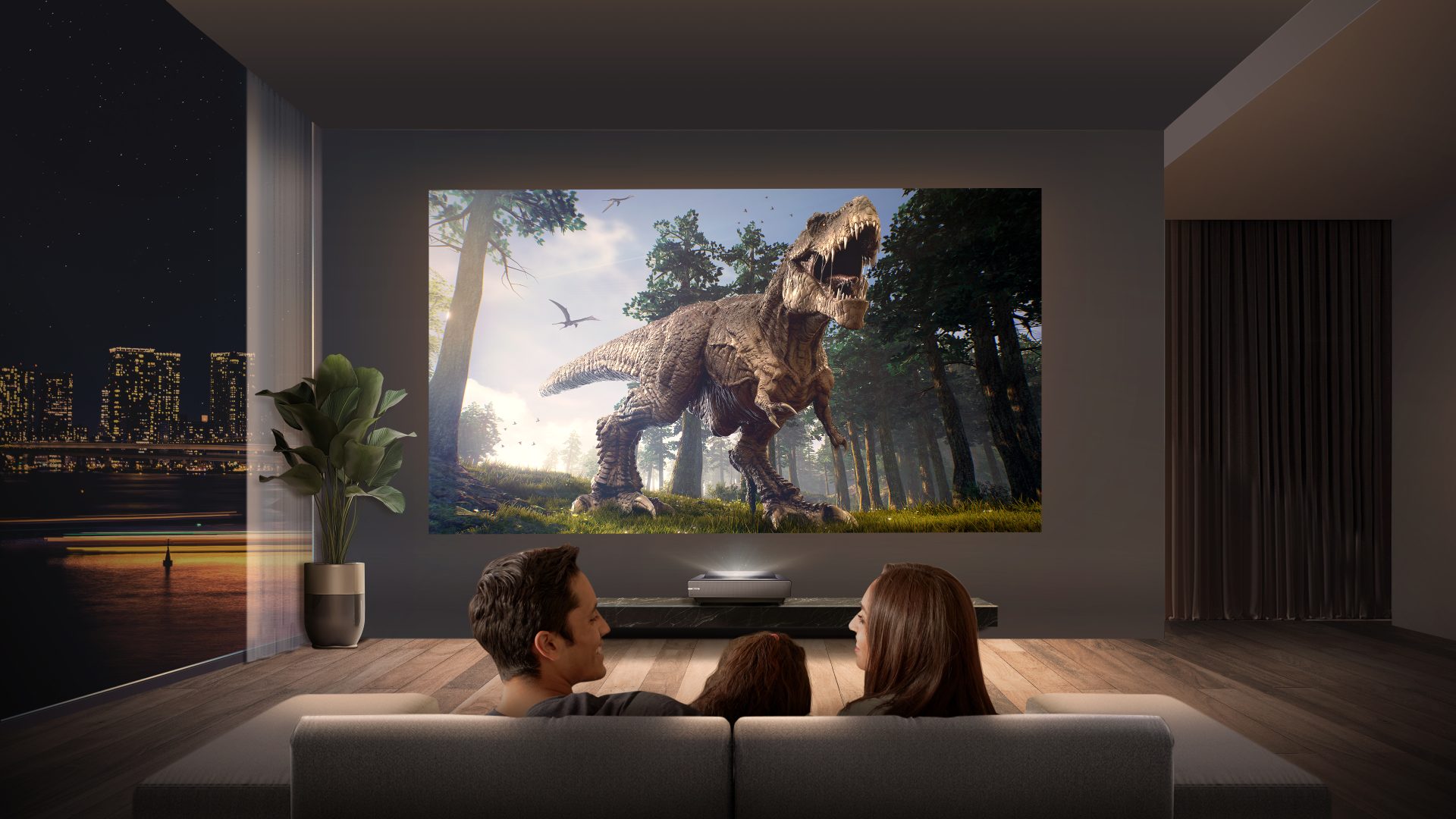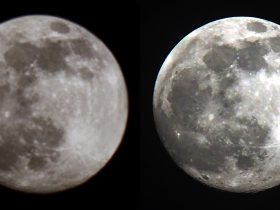Hisense Canada, a subsidiary of global consumer technology giant Hisense Corp has provided Wifi Hifi a primer, demystifying the next evolution of big screen projection television called Laser TV.
Hisense Canada sees Laser TV as an easy plug-and-play video solution offering a sleek, crisp image, detailed sound and an easy alternative to the days where big-screen images came from a ceiling-mounted projector positioned halfway across the room.

To demystify Laser TV, Hisense Canada — the progenitor of laser TV technology — has provided this guide to what they are and how they work:
What is Laser TV?
A laser television uses laser lights to project an image from an ultra-short-throw projector. The projector offers many of the same features you would find in a panel television —built-in sound system, a smart TV operating system, tuner to receive over-the-air channels and the required inputs for gaming and other associated devices.
The best laser TVS are powered by three lasers, one for each colour spectrum, red, green and blue light. This results in a bright picture with a colour space that often exceeds the BT.2020 standard for the number of colours typically in use in today’s movies and TV shows.
How does Laser TV compare to LED?
Laser TV screens are larger — up to as much as 130 inches — and the lasers create a picture that is brighter than can be produced by LEDs. The lasers also have a longer operating life than a conventional LED or high-pressure bulb — more than 25,000 hours, which is equivalent to more than 10,000 movies. Put it together, there is more value inch-for-inch and operating life in a laser TV than there is in a typical panel TV.

How does an ultra-short-throw projector compare to a typical projector?
Traditional projectors rarely have smart TV software, Bluetooth wireless connections or built-in tuners. They are usually purpose-built to project a big image onto a wall or screen. They are also typically mounted on the ceiling or high up at the back of the room. Laser projectors are stationed below the screen, often as close as 15-inches to the wall, and the all-in-one set up is less intrusive and more user friendly, and include smart TV features.

How does a Laser TV work?
A triple-colour laser emits red, green and blue light directly, without a spinning colour wheel. The result is a much wider colour gamut (more than a billion colours that are more real and natural) that exceed the standard UHD 4K colour rangeand true-to-life images delivered by eight million pixels for an image that is sharper and brighter. The projector is equipped with a wide-angle lens, and is equipped to connect seamlessly to a home theatre set up, with ports for HDMI (including ARC HDMI to connect to compatible audio devices with a single HDMI cable), USB ports, RCA outputs and Digital Audio.
What kind of screen does it need?
To get the most out of a laser TV, it is best viewed with an Ambient Light Rejecting (ALR) screen —a reflective, textured screen designed specifically for laser TVs. The light from the projector comes at an acute angle, and an ALR screen ensures that light is reflected directly towards the viewer. But it also directs ambient light in the room away from the viewer, ensuring a crisp, clean image.
ALR screens are available as a “Daylight” screen for big, airy rooms with lots of light, or a “Cinema” screen for dedicated media rooms and light-controlled spaces.

Where is a laser TV ideally used?
Laser TVs are best enjoyed in dark rooms. Because the size can exceed 120 inches, ensure there is enough space in the room for a screen that big. You also need to ensure there is enough space at the front of the room for the components (however, if you already have a set up near your TV housing home theatre components or a gaming system, the space required for a laser TV is roughly the same). So small rooms or compact condos may not be the best environment for a laser TV set up.
“The picture quality of a laser TV is exceptional, with true-to-life images delivered by eight million pixels on an extra-large screen,” says Puneet Jain, Senior Director of Marketing and E-Commerce for Hisense Canada. “The result is an image that projects images on your screen the way the director intended us to see them in a theatre-like way, but now, we can do it from the comfort of our home.”
Hisense Canada’s full array of Laser TVs can be viewed here.









